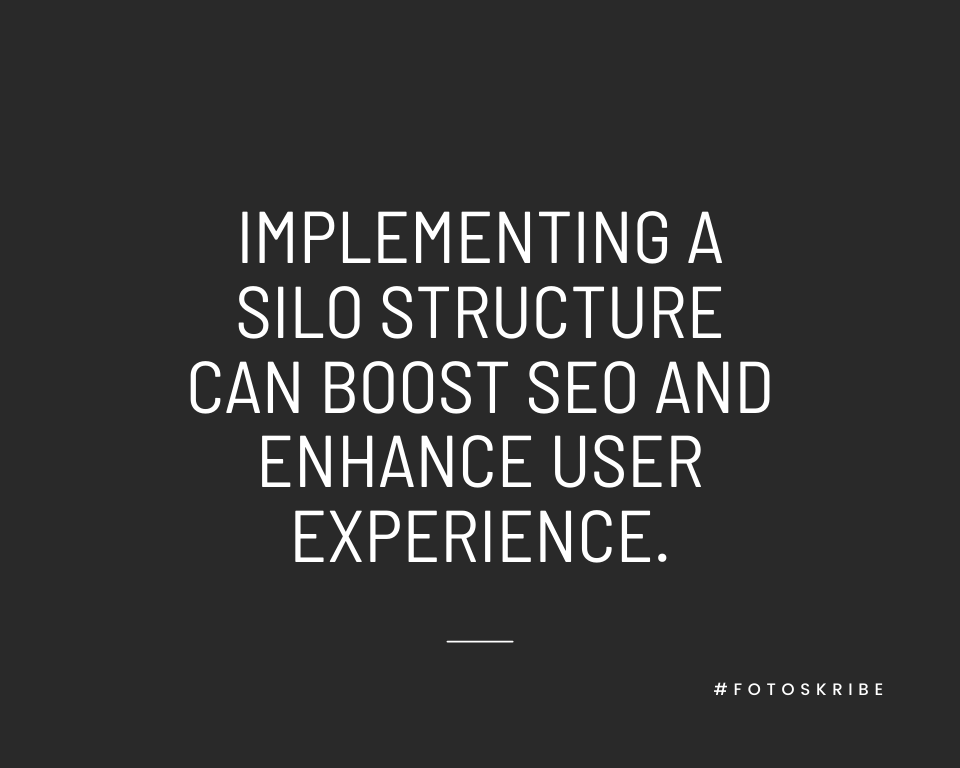Understanding the Silo Structure & How It Can Benefit Your Website
How you structure your website can either make it SEO and user-friendly or turn it into a hard-to-navigate mess. Your website’s architecture, a thing that’s often overlooked, is actually one of the factors that could turn out to be very beneficial for it in the long run. How? Here’s an analogy to help you understand. Imagine pouring water down a pipeline; the water will flow wherever the pipe bends and to all other pipelines that join the source. Logically, the pipeline that you want the water to reach faster will be placed at a higher point. Similarly, a proper website architecture, such as the one with the silo structure, not only helps your users to navigate with ease but also allows the link juice to reach all the other important web pages. To get a better understanding of what a silo structure is and how it can benefit your website, read on.
What is a Silo Structure?

Silo structure or silo architecture is an SEO architecture technique that helps you optimize your website’s structure by grouping relevant content under a category or subcategory following a hierarchy. This helps you in two ways – to boost SEO and enhance user experience. For SEO, it mainly allows maximum link juice to flow to the required web pages, thus helping you improve your chances to rank better on the search engine result page (SERP). In addition to that, it also works well for building an improved user experience.
Thinking through your website structure is one of the integral mind mapping steps that is often brainstormed upon before launching a website. Even though it can be implemented later as well, it is usually recommended to implement the structure during the development of the website to avoid the pain of redoing everything later. While brainstorming to incorporate the silo structure into your website, you could start thinking in terms of specific themes or categories grouped under your most relevant keywords. And moving forward, you could begin with interlinking to some other pages on your website. To better understand the entire process and how it works, follow through.
Suggested Read: SEO Tips For Photographers: A Guide To Grow Your Organic Traffic
Incorporating the Silo Architecture: When the Website is New
Given below are some of the steps that you can follow to incorporate this SEO architecture technique into your website while setting it up.
1. Create a Mind Map

Think of your website’s structure as a map to access different segments within your website. And to create it flawlessly, start by mind mapping and creating a blueprint of the structure. Think in terms of what you want on a particular page and where. To make this process seamless, you can take the help of mind mapping applications such as Microsoft Visio, MindMeister, MindGenius, etc.
2. Brainstorm High-Traffic Keywords
Keywords are what your web pages rank for, making it important to put a lot of thought into creating a layout for them. Whatever be your niche or target market, search for keywords that have a high search volume and work as a broad category. Once you have finalized your broader category keywords, then you can search for secondary keywords that also work as subcategories. However, for them to work, note that these subcategories should be relevant to the overall theme or the broader topic.
3. Create Silo Content

This is where the magic happens! Create a WordPress page where you will upload the silo content. This will work as your landing page – acting as a gateway for other web pages. Some of the things to keep in mind while writing content for a silo page are given as follows:
- Make the page image-rich.
- Try to write evergreen content so that you have to make fewer updates.
- Add a table of content where you can list and add a link to other web pages.
- Include the main keyword and LSI keywords but avoid keyword stuffing.
- Do a competitive analysis and create content that stands out.
Suggested Read: How To Drive Traffic To Your Website: A Guide For Business Owners
4. Interlinking
Working on a well-thought-out interlinking strategy is just as crucial. Strategic interlinking ensures that when search engines crawl through a particular web page, they also crawl through the internal links in the page, thus driving link juice to the desired pages. Make sure that the homepage is linked to all the silo pages, and all the blogs are linked to the homepage or parent silo pages as well as linked to other blog pages. However, here’s a note of caution – try to interlink the blog pages that add relevance to the current web page. Do not simply link pages just for the sake of doing it.
Incorporating the Silo Architecture: When the Website Already Exists

Listed below are a few steps that you can follow to incorporate the silo structure into an already existing website.
- Make sure every category opens up to a minimum of three blog posts and that each of these blogs is linked to a single category.
- Add well-researched silo content on a new WordPress page for main keywords.
- Silo page should work as a landing page and include all the links to the blog posts relevant to that page.
- Remove irrelevant internal links from the silo pages and the homepage.
- Look for keywords that you are already ranking for and work well as subcategories.
- Add them to the homepage or the silo page in the navigation menu.
Further Read: Republishing Blog Posts: What’s the Need & How to Do It
Implementing the silo structure to your website helps to strengthen your site’s SEO and levels up your user experience as well. Both of these factors can significantly help in improving your SERP rankings. Just like building blocks, try to take it step by step. Understand that linking the right matter at the right place is more beneficial than simply adding more links. If you found this information helpful or have any questions in mind, do let us know in the comments section below.
At Fotoskribe, we aim to help businesses like yours grow their online presence by delivering smart and meaningful content that engages your audience. And we do it in a way that gets Google’s attention.
For more information on how we can help – check out our pricing plans.

